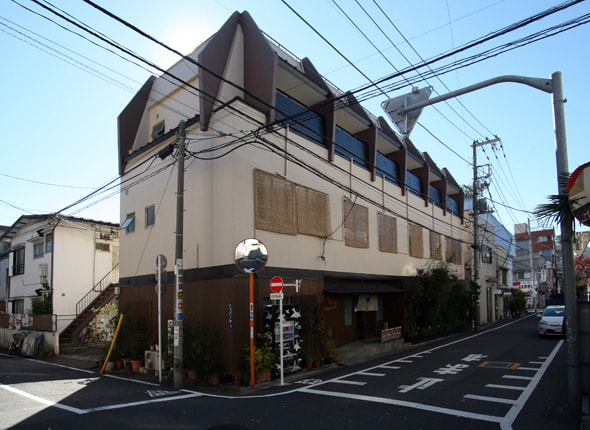
Ryokan Sawanoya
Yanaka, located near Ueno Park, is a temple district with many temples, and has a lot of greenery and the flavor of the old commercial district of Tokyo. Ryokan Sawanoya, a popular Japanese-style inn for overseas tourists, is situated in Yanaka. Although Sawanoya is a small inn with 12 rooms, which has been in business for a long time, it is being introduced in guidebooks in Japan and overseas. The inn stands along the street leading to Nezu Shrine, an Important Cultural Property, and, in its neighborhood, there are Kototoi Street, which runs from Hongo Yayoi-cho to Shitaya and Ueno, and the Yanaka Ginza shopping district. Sawanoya also serves as a base from which tourists can explore the cordial atmosphere of the old commercial district of Tokyo and traces of the Edo Period.
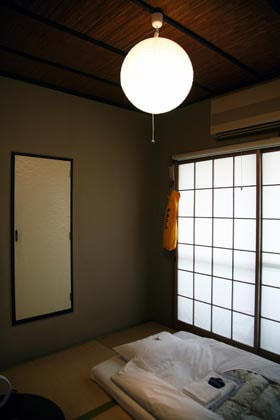
A single room
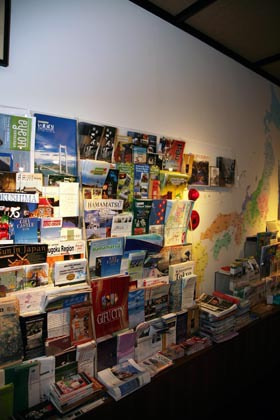
Many pamphlets and leaflets about tourist spots across Japan, which are written in various languages, are placed in the lobby. Sawanoya's staff has networks with inns and travel agencies around the country, so they can receive materials and travel information from all over the country.
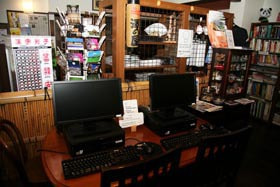
In addition to a variety of souvenirs, there are PCs in the lobby, so tourists can obtain information about the Tokyo metropolitan area and various parts of the country.
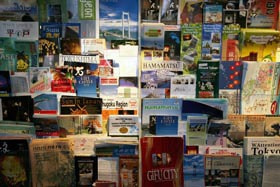
Travel guides for various regions in Japan. Most of the guides are multilingual (including Japanese, English and other languages). The staff can introduce tourists, who will visit the countryside, to inns or other facilities in those regions.
Yanaka and the adjacent Uenosakuragi area were towns where many artists and writers used to live since olden days, and there were Tokyo Fine Arts School and Tokyo Music School (present-day Tokyo University of the Arts) in the vicinity. There are also the Asakura Choso Museum, which was Sculptor Fumio Asakura's former residence, and Sculptor Denchu Hiragushi's former residence. Many students, including international students, have lived in these areas that retain remnants of gathering places for artists and literary figures. Sawanoya is crowded with casual travelers from western countries, who are interested in towns where remnants of the Showa Period and historic relics from the Edo Period still remain. The Yanaka area was designated as "Top 100 Historical Sites of Beautiful Japan" along with Kan-eiji Temple and Ueno Park in 2007. In this area, there are popular stores, including "Isetatsu," a store selling Edo figured papers, which has been in business for more than140 years, and "Kikumi Senbai," which has been in business for 120 years, "Tanabe Bunkai-do," at which Joan Miró, a prominent Spanish artist, bought brushes, "Echigo-ya," a tofu store, "Sao-jin," an ice cream shop, "Daikoku-do," a baked rice cracker shop, and "Kabaya Coffee," which has been in business for more than 70 years.
In commemoration of the 40th anniversary of the enforcement of the Law Concerning Special Measures for Preservation of Historic Natural Features in Ancient Cities, the lists of "Top 100 Historical Sites of Beautiful Japan" were selected in 2007 by the executive committee of Top 100 Historical Sites of Beautiful Japan, which consisted of the Ancient Capital Asuka Preservation Foundation and other organizations.
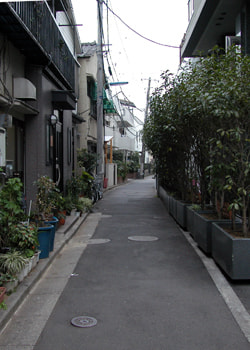
A nostalgic alley in the Yanaka area
In the Edo Period, Kan-eiji Temple was founded in Ueno, and its branch temples were also built around it. Yanaka Cemetery (now, a part of the cemetery is Kan-eiji Cemetery where tombs of Yoshinobu Tokugawa and distinguished people from various fields are placed) is a cemetery of Kan-eiji Temple, and known as a cherry blossom viewing spot. Since there are many temples in the Yanaka area, it is a quiet town where the flavor of Edo and old Tokyo still remains.
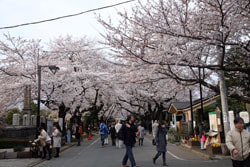
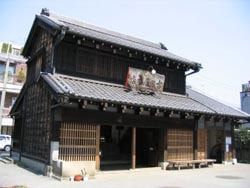
Although Yoshidaya Sake-ten, originally located in Yanaka 6-chome, was a long-established store dating from the Edo Period, the its building was donated to Taito City and moved to the present-day Uenosakuragi, and the building at that time was reconstructed. Implements and documents are designated as tangible folk-cultural properties of Taito City, and the building is an exhibition hall attached to the Taito City Shitamachi Museum. (Uenosakuragi 2-chome)
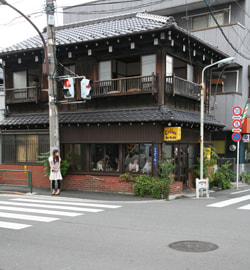
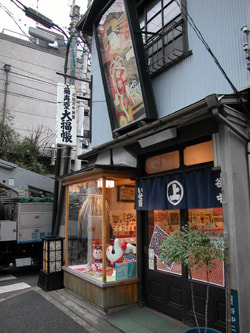
"Isetatsu," a long-established store founded in 1864, which sells small articles, such as Edo figured papers and cotton towels. The exterior full of the atmosphere of Edo. (Yanaka 2-chome)

A nostalgic alley in the Yanaka area
In the Edo Period, Kan-eiji Temple was founded in Ueno, and its branch temples were also built around it. Yanaka Cemetery (now, a part of the cemetery is Kan-eiji Cemetery where tombs of Yoshinobu Tokugawa and distinguished people from various fields are placed) is a cemetery of Kan-eiji Temple, and known as a cherry blossom viewing spot. Since there are many temples in the Yanaka area, it is a quiet town where the flavor of Edo and old Tokyo still remains.


Although Yoshidaya Sake-ten, originally located in Yanaka 6-chome, was a long-established store dating from the Edo Period, the its building was donated to Taito City and moved to the present-day Uenosakuragi, and the building at that time was reconstructed. Implements and documents are designated as tangible folk-cultural properties of Taito City, and the building is an exhibition hall attached to the Taito City Shitamachi Museum. (Uenosakuragi 2-chome)


"Isetatsu," a long-established store founded in 1864, which sells small articles, such as Edo figured papers and cotton towels. The exterior full of the atmosphere of Edo. (Yanaka 2-chome)










